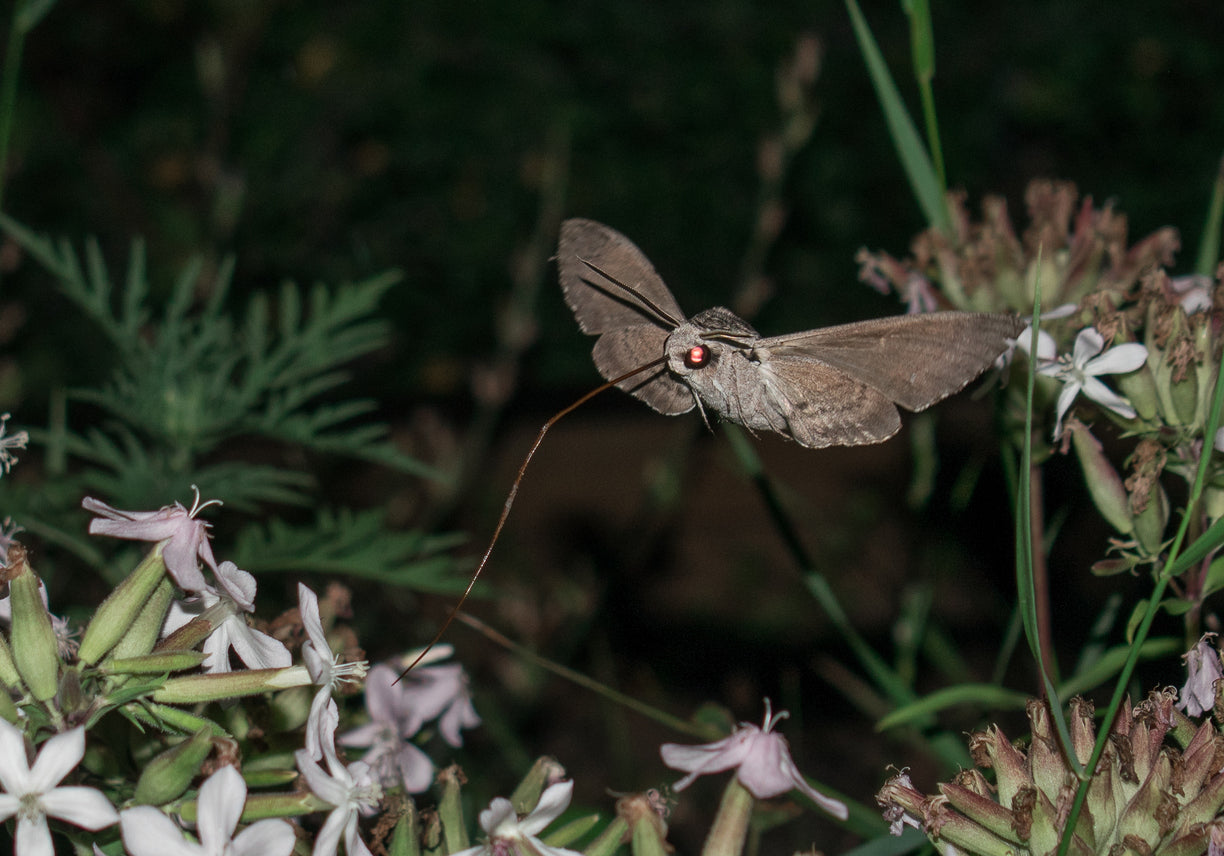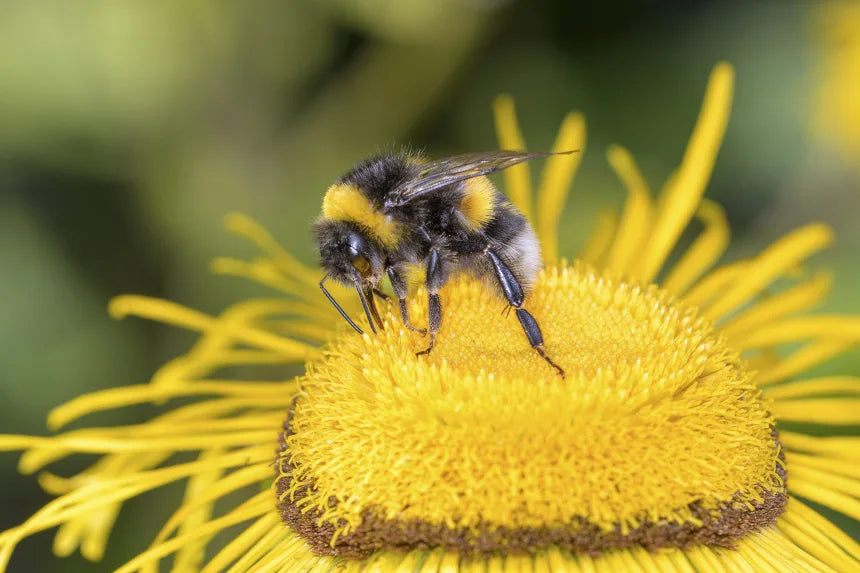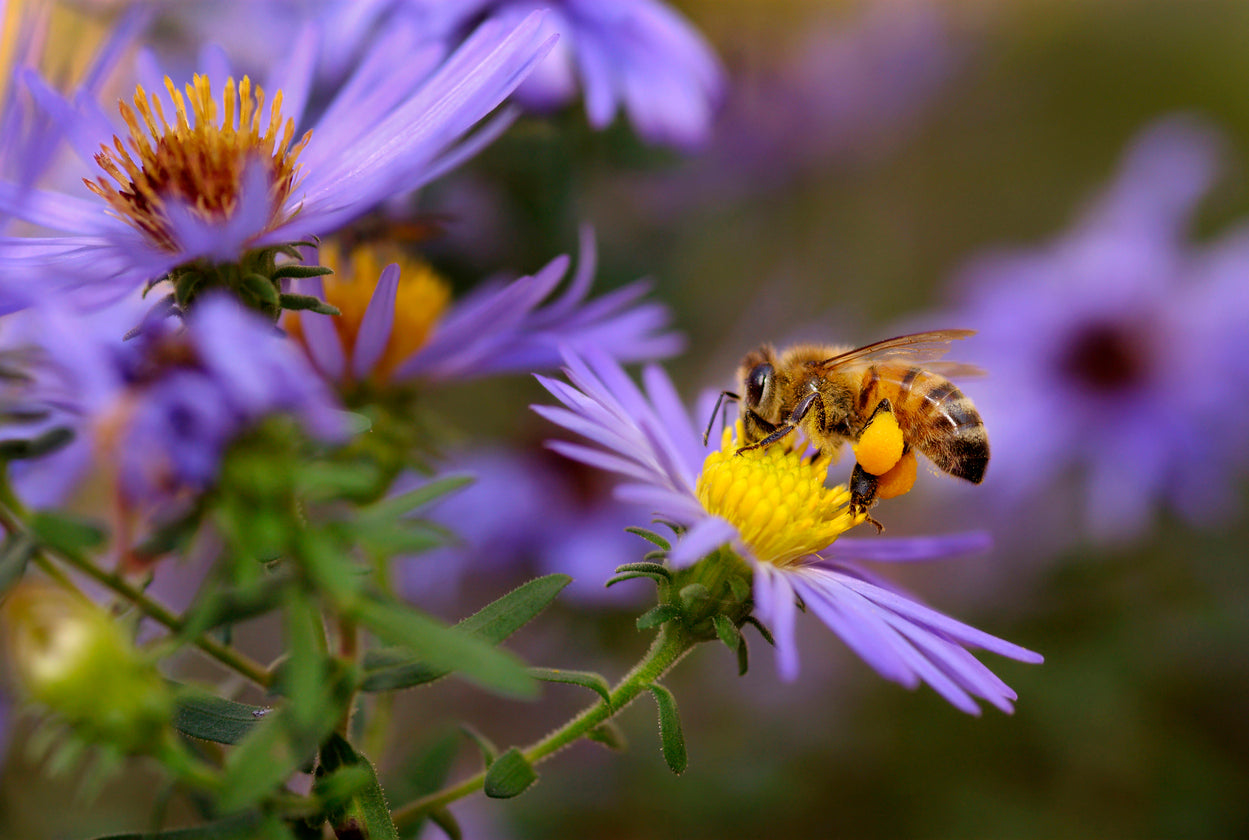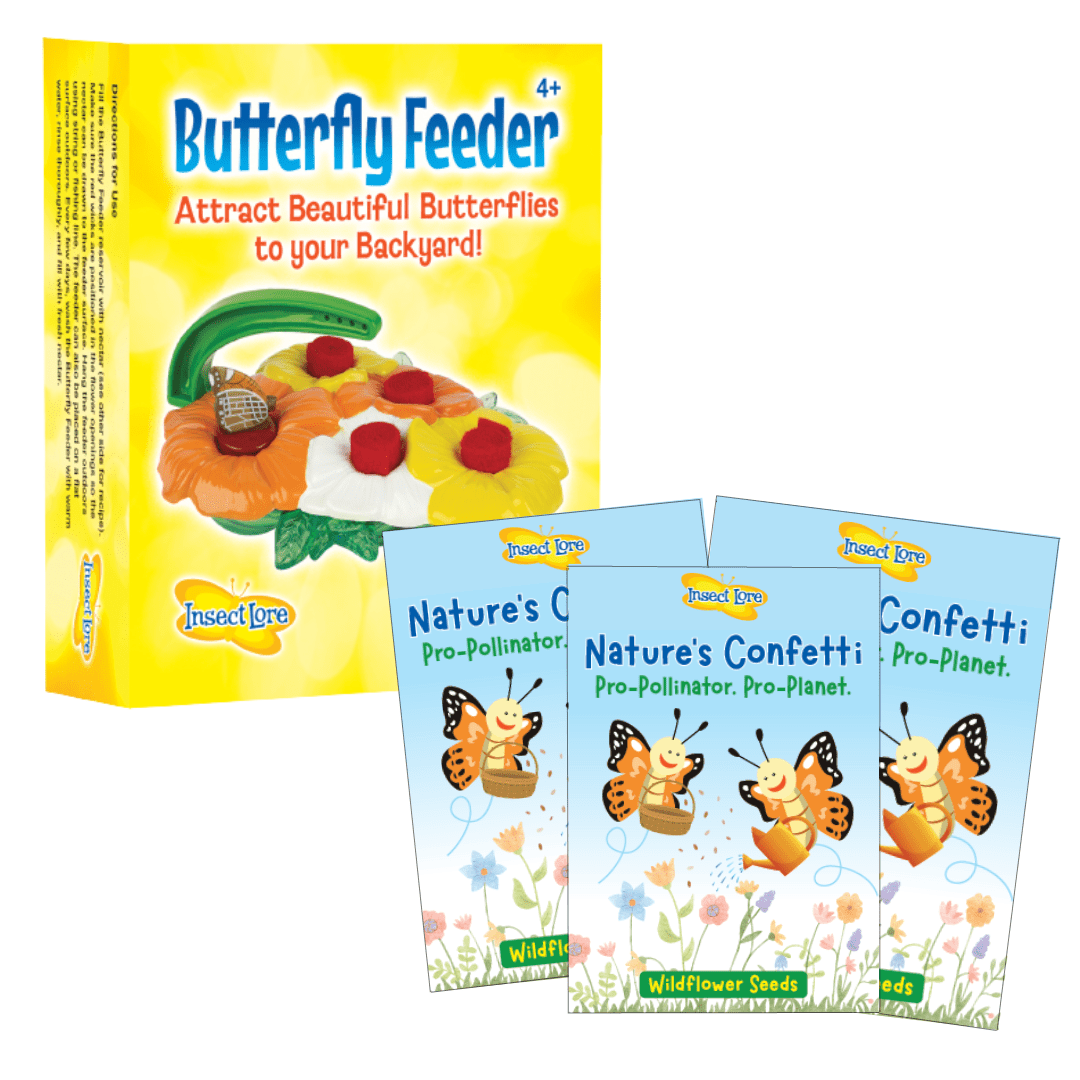Add description, images, menus and links to your mega menu
A column with no settings can be used as a spacer
Link to your collections, sales and even external links
Add up to five columns
Add description, images, menus and links to your mega menu
A column with no settings can be used as a spacer
Link to your collections, sales and even external links
Add up to five columns

Night Flowers and Nocturnal Pollinators
By Spencer McManamna August 06, 2024 6 min read
It may be nighttime, but nature isn't sleeping! Night pollinators and nocturnal flowers come alive after dusk when many daytime species are inactive. These interactions reveal a fascinating variety of pollination strategies, with flowers like moonflowers and evening primroses designed to attract moths, bats, and other nighttime pollinators through their fragrance and pale colors. Join us as we take flight into this nocturnal world and learn about how plants and pollinators have adapted to thrive in the darker hours where things go bump in the night!
Nocturnal vs. Diurnal Pollination
Nocturnal pollination occurs when flowers are pollinated during the night, typically by species adapted to nighttime activity such as moths, bats, and certain beetles. These nocturnal flowers often feature pale or white blooms that reflect moonlight and emit strong, sweet fragrances to attract their nighttime visitors. In contrast, diurnal pollination happens during the day and primarily involves insects like bees and butterflies that are drawn to brightly colored flowers and sweet nectar. While nocturnal pollinators rely on scent and subtle light cues, diurnal pollinators use visual signals and daytime warmth to find their food sources. Both systems highlight the diverse evolutionary strategies plants use to ensure reproduction, with nocturnal pollination focused on nighttime visibility and scent, and diurnal pollination leveraging color and sunlit visibility.
Animals that Pollinate Flowers at Night
Night pollination involves a surprising variety of nocturnal animals beyond expected species such as moths and bats. Mice, for instance, have been observed visiting flowers in search of nectar, inadvertently transferring pollen as they forage. Grasshoppers and cockroaches, though less glamorous, also play roles in nocturnal pollination by moving between flowers and carrying pollen on their bodies. These creatures contribute to the pollination of night-blooming plants, demonstrating the complex and often overlooked interactions that occur after dark. Of course, they are not as effective as the more commonly known night pollinators, which consist of: the following.
Moths
Often called "night butterflies", moths play a crucial role in nighttime pollination. Prominent among them are the sphinx moths, including the hummingbird moth and the hawk moth, which are known for their hovering flight and long proboscises that allow them to access nectar from deep, tubular flowers. These moths are found in regions ranging from North America to Europe and Asia. Another key player is the luna moth, native to North America, which is drawn to large, fragrant blooms and contributes to the pollination of plants such as magnolias and pawpaws.
In terms of specific plants, night-blooming species like evening primroses, moonflowers, and night-blooming cereus have evolved to attract these nocturnal pollinators. These plants often feature pale or white flowers that are more visible under moonlight and emit strong, sweet fragrances to lure moths from afar. Additionally, some tropical species of moths are attracted to plants like the datura or certain types of orchids that open at night.
Ants
Primarily known for their daytime activities, ants also contribute to nighttime pollination in specific ecosystems. Some species of ants, such as the sugar ant and carpenter ant, are active during twilight and the early night and are attracted to the nectar of night-blooming flowers. These ants, found in regions such as Australia and parts of North America, are drawn to the sugary nectar of plants like evening primroses and some types of night-blooming orchids. As they forage for food, they inadvertently transfer pollen from one flower to another, aiding in plant reproduction. In tropical and subtropical regions, ants can be attracted to plants with specialized adaptations for nocturnal pollination, such as strong fragrances and ample nectar rewards. Flowers like the night-blooming cereus or various types of tropical orchids may attract ants, especially within dense vegetation.
Bats
Bats are vital nocturnal pollinators, especially in tropical and subtropical regions where they play a key role in the reproduction of certain night-blooming plants. Among the bat species involved in this process are fruit bats, also known as flying foxes, and nectar-feeding bats, such as the long-tongued bat found in Central and South America. Fruit bats, with their large wingspans and keen sense of smell, are drawn to the fragrant, large blooms of plants like baobabs and durian trees. Their feeding behavior involves landing on or hovering near flowers to access nectar, inadvertently transferring pollen between blossoms.
Nectar-feeding bats, such as the lesser long-nosed bat found in the southwestern United States and Mexico, are adapted to feed on the nectar of specialized flowers like the saguaro cactus and various agave species. These bats are equipped with long tongues that allow them to reach deep into tubular flowers. They are attracted to the large, pale, and often heavily scented blooms that open at night, offering a rich nectar reward.
Bees
While most bees are diurnal and active during the day, a few species have adapted to nocturnal pollination. One notable group is the sweat bees, particularly those in the genus Lasioglossum. These bees can be found in various regions, including North America and parts of Europe, and are known for their ability to forage during twilight and into the early night. Sweat bees are attracted to flowers with strong fragrances and high nectar content, such as evening primroses and certain species of night-blooming phlox, which open or become more accessible in the late hours.
In tropical regions, some bee species, such as the stingless bees (tribe Meliponini), also engage in nighttime foraging. These bees, which are common in areas like Central and South America, are drawn to night-blooming flowers that emit strong scents or have specialized structures suited to their nocturnal activity. Plants like the moonflower and certain types of night-blooming orchids provide the nectar and pollen resources these sleepless bees seek.
Beetles
Nighttime pollination by beetles is an intriguing phenomenon, with certain beetle species playing a key role in the reproductive processes of various plants. Notable among these beetles are the scarab beetles, including species such as the dung beetle and flower beetle. These beetles are found in diverse regions, including tropical and subtropical areas across Africa, Asia, and the Americas. Scarab beetles are particularly attracted to flowers with strong, often fruity or musky scents, and they are known to pollinate plants like the tropical titan arum and certain species of carrion flowers. The beetles are drawn to these plants by their odor and the promise of abundant nectar or food resources.
In temperate regions, beetles like the darkling beetle also contribute to nighttime pollination. These beetles are attracted to flowers that open or release their fragrance in the evening, such as evening primroses and certain types of wild ginger. Their role in pollination involves transferring pollen while they search for nectar and shelter, often landing on or crawling over the blooms!
Benefits of Pollinating at Night
Nighttime pollination offers several benefits for nocturnal animals, including reduced competition and fewer predators. By foraging during the cooler, darker hours, nocturnal pollinators like moths, bats, and beetles avoid the high activity levels and aggressive competition found during the day among diurnal pollinators. Additionally, the absence of day-active predators such as birds and some insects reduces the risk of predation, allowing these animals to feed and perform their pollination duties with much greater peace of mind.
Nocturnal Plant Adaptations
Plants that rely on nocturnal pollinators have developed a range of unique adaptations to attract their nighttime visitors. For instance, trumpet flowers, such as those of the evening primrose and certain species of moonflowers, open their large, tubular blooms at dusk and intensify their sweet fragrances throughout the night. This adaptation is designed to draw in moths, which are highly sensitive to scent and are attracted to the strong, sweet aromas that signal a rich nectar source. The flowers' pale or white color also enhances visibility under moonlight, further attracting moths that use their keen sense of smell to locate these blooms in the dark.
Night-blooming cereus and other nocturnal flowers have evolved to bloom and release their scents primarily after sunset. Their blooms are often large and showy, designed to make the most of limited light. Additionally, some plants produce high quantities of nectar to reward their pollinators, ensuring they are well-fed and more likely to transfer pollen as they move from flower to flower.
Nocturnal Pollinator Adaptations
Nocturnal pollinators have evolved incredible adaptations to thrive in the darkness and pollinate night-blooming flowers. For instance, moths possess highly sensitive olfactory systems with an increased density of neurons, enabling them to detect faint floral scents over long distances. This enhanced sense of smell allows them to locate nectar-rich flowers that bloom only at night, such as moonflowers and evening primroses. Additionally, many moths have developed specialized photoreceptors in their eyes that are adapted to low-light conditions, allowing them to navigate and forage efficiently in the dark.
They aren't alone! Bats, particularly nectar-feeding species, have evolved sophisticated echolocation abilities to navigate and locate flowers in complete darkness. Their large eyes are adapted for low-light vision, and their echolocation calls help them identify the proximity and shape of flowers. Nectar-feeding bats have also developed long tongues that can extend deep into tubular flowers, accessing nectar while inadvertently transferring pollen.
Examine the Curious Lives of Insects with Insect Lore
Whether night or day, your adventure in the incredible world of insects is underway! Explore our Butterfly Garden Kit.
Related products
Also in Butterflies

Ultimate Guide to Pollinators
December 15, 2025 8 min read
Pollination is the transfer of pollen from an anther of a plant to the stigma of a plant, which makes fertilization and the production of seeds possible. Read on to discover the uniquely incredible world of pollination, which brings so many priceless gifts to our own world.

Tips for Implementing STEM Education in the Elementary Classroom
December 11, 2025 4 min read
In this article, we'll help explain practical strategies for bringing STEM into daily instruction and will explore specific butterfly-metamorphosis activities that enrich your students’ scientific understanding!

History of National Pollinator Month
December 11, 2025 4 min read
National Pollinator Month, observed every June, is dedicated to raising awareness about the essential role pollinators play in sustaining our ecosystems, agriculture, and global food supplies.

Enter Your Voucher Code Below
If you are experiencing difficulty redeeming your voucher on your desktop, please use a mobile device for a better redeeming experience.

We are unable to combine redemption fees. If you are redeeming 1-5 voucher codes, please complete separate purchases through our website for each voucher. If you are redeeming 6+ vouchers, please email us at customerservice@insectlore.com with your voucher codes and shipping address and we'll send you a custom invoice for payment.
Thank you for Redeeming your voucher!
You redeemed a $title

Don't miss this special one Time Offer.
Check the Box to Add this Special Offer to your Cart

Don't miss this special one Time Offer.
Check the Box to Add this Special Offer to your Cart
It looks like you are an Insect Lore UK/EU customer! You are visiting the Insect Lore USA website.
Click Insect Lore UK/EU website to be redirected to insectlore.co.uk.




